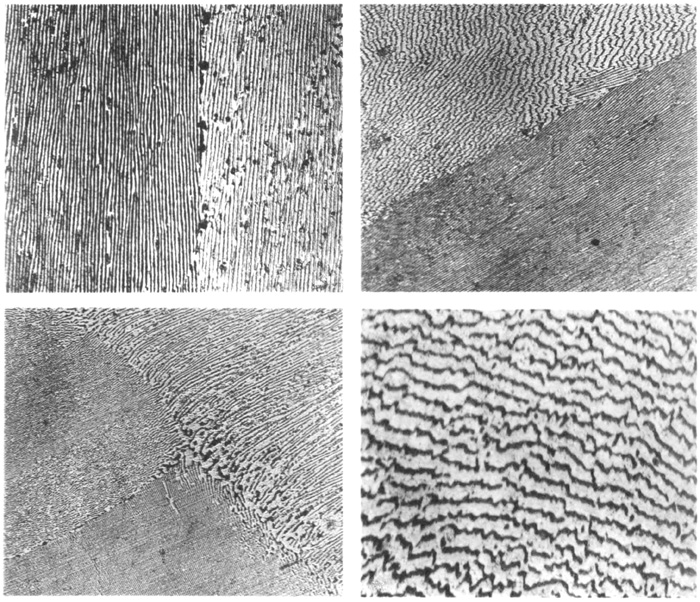that I would lose the whole in the parts

Plate 8
(cropped from borders, and rearranged)
Fig. 31 [upper left] Eutectic alloy showing regular lamination. V. × 600 diameters.
Fig. 32 [upper right] Eutectic alloy showing junction of two “grains.” V. × 300 diameters
Fig. 33 [lower left ] Eutectic alloy showing junction of three “grains.” V. × 300 diameters
Fig. 34 [lower right] Laminated eutectic alloy. V. × 600 diameters
Walter Rosenhain (1875-1934 *), with P. A. Tucker. “Eutectic Research.—No. 1. The Alloys of Lead and Tin.” Philosophical Transactions of the Royal Society of London 209 (1908) : 89-122 (followed by plates 5-9)
Pennsylvania State University copy, digitized August 23, 2012
“Fig. 31 (magnification 600 diameters) shows an example of regular lamination, the layers of the two constituents lying approximately parallel; the photograph, however, shows the junction of two regions or ‘grains’ in the eutectic, the general direction of these parallel bands being decidedly different in the adjacent ‘grains,’ while more or less constant throughout each region or ‘grain.’”
p 118
—
“I didn’t feel the need of that record. It would have been going backward. I didn’t want to go back and unravel things step by step. Perhaps I was afraid that I would lose the whole in the parts. At any rate, I didn’t go for my record.”
from “Tom Outland’s Story,” in Willa Cather, The Professor’s House (1925) : *
tags:
mereology
W. Rosenhain & P. A. Tucker, “Eutectic Research... The Alloys of Lead and Tin” (1908); Willa Cather, The Professor’s House (1925)